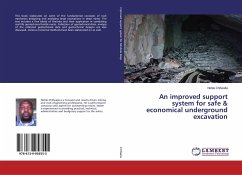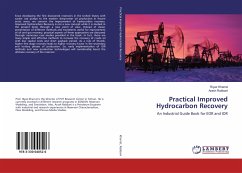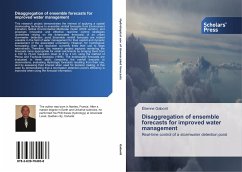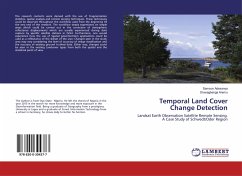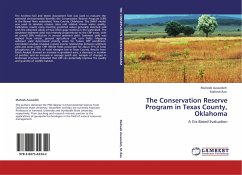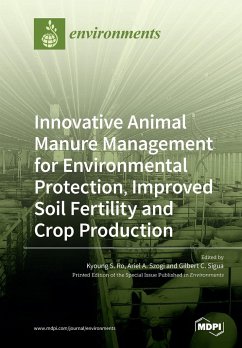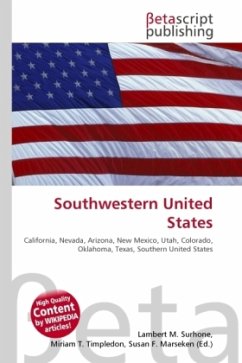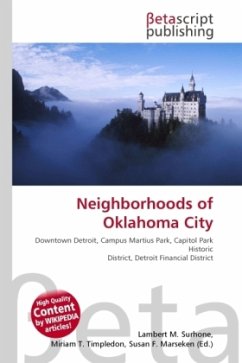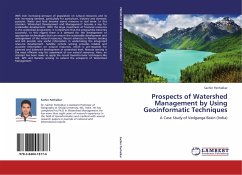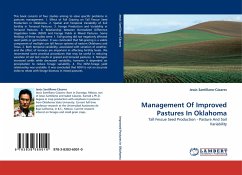
Management Of Improved Pastures In Oklahoma
Tall Fescue Seed Production - Pasture And Soil Variability
Versandkostenfrei!
Versandfertig in 6-10 Tagen
32,99 €
inkl. MwSt.

PAYBACK Punkte
16 °P sammeln!
This book consists of four studies aiming to solve specific problems in pastures management: 1. Effect of Fall Grazing on Tall Fescue Seed Production in Oklahoma. 2. Spatial and Temporal Variability of Soil Fertility in Terraced Pastures. 3. Forage Production and Variability in Terraced Pastures. 4. Relationship between Normalized Difference Vegetation Index (NDVI) and Forage Yields in Mixed Pastures. Some findings of these studies were: 1. Fall-grazing did not negatively affected seed yields or germination. It was concluded that fall-grazing is a viable component of multiple use tall fescue s...
This book consists of four studies aiming to solve specific problems in pastures management: 1. Effect of Fall Grazing on Tall Fescue Seed Production in Oklahoma. 2. Spatial and Temporal Variability of Soil Fertility in Terraced Pastures. 3. Forage Production and Variability in Terraced Pastures. 4. Relationship between Normalized Difference Vegetation Index (NDVI) and Forage Yields in Mixed Pastures. Some findings of these studies were: 1. Fall-grazing did not negatively affected seed yields or germination. It was concluded that fall-grazing is a viable component of multiple use tall fescue systems of eastern Oklahoma and Texas. 2. Both temporal variability, associated with variation of weather, and the effect of terraces are important in affecting fertility levels. We recommend some practical procedures that may be useful in reducing variation of soil test results in grazed and terraced pastures. 3. Nitrogen increased yields while decreased variability, however, it depended on precipitation to reduce forage variability. 4. The NDVI-forage yield relationship was unstable. It was concluded that NDVI is not an accurate index to relate with forage biomass in mixed pastures.



